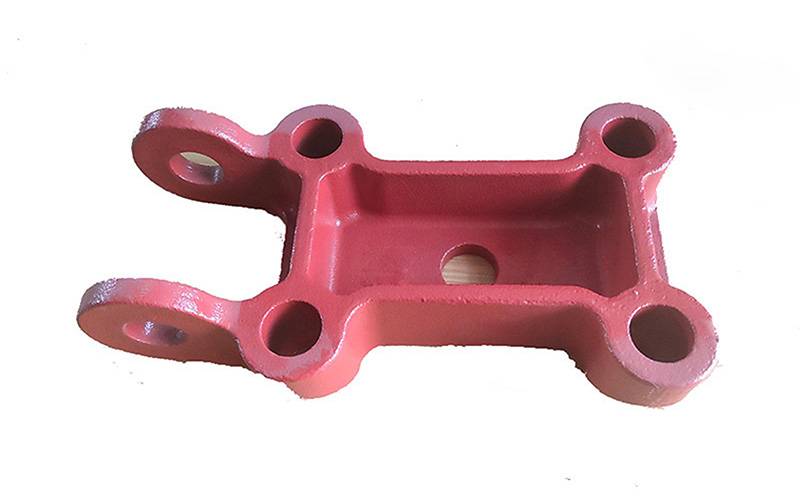The classification
1.According to the mass percentage of carbon:
Low carbon steel (C: ≤ 0.25%), also known as mild steel, low carbon steel is easy to accept in various processing such as forging, welding, and cutting, and is commonly used to manufacture chains, rivets, bolts, shafts, etc.
Medium carbon steel (C: 0.25%<c≤0.6%) has killed steel, flat killed steel, boiling steel, and other products. In addition to carbon, it can also contain a small amount of manganese (0.70%~1.20%). Product quality is divided into ordinary carbon structural steel and high-quality carbon structural steel. Good thermal processing and cutting performance, poor welding performance. The strength and hardness are higher than those of low carbon steel, while the plasticity and toughness are lower than those of low carbon steel. Hot-rolled and cold-drawn materials can be used directly without heat treatment, or they can be used after heat treatment. The quenched and tempered medium carbon steel has good comprehensive mechanical properties. The highest hardness that can be achieved is about HB538, and the tensile strength σb is 600~1100MPa. Therefore, among various uses of medium strength level, medium carbon steel is the most widely used, in addition to being used as a building material, it is also widely used in the manufacture of various mechanical parts.
High carbon steel (C:>0.6%) is often referred to as tool steel, with carbon content ranging from more than 0.60% to 1.70%, and can be hardened and tempered. Hammers, crowbars, etc. are made of steel with a carbon content of 0.75%: cutting tools such as drills, taps, reamers, etc. are made of steel with a carbon content of 0.90% to 1.00%.
The higher the carbon content, the greater the hardness and strength, but the lower the plasticity.
In addition, iron-carbon alloys with a carbon content of 2.1% to 4.5% are generally called cast iron. )
2. According to the quality of steel (mainly the content of impurities sulfur and phosphorus):
- Ordinary carbon steel (S≤0.055%, P≤0.045%)
- High-quality carbon steel (S≤0.040%, P≤0.040%)
- High-quality carbon steel (S≤0.030%, P≤0.035%)
3. According to the purpose:
- Carbon structural steel: mainly used for bridges, ships, building components, machine parts, etc.
- Carbon tool steel: mainly used for cutting tools, molds, measuring tools, etc.
The grades and uses
- Ordinary carbon structural steel: Carbon structural steel is divided into 5 grades according to the yield strength of steel: Q195, Q215, Q235, Q255, and Q275, each grade is divided into A, B, C, and D grades due to different quality. Q195, Q215, and Q235 have good plasticity and can be rolled into steel plates, steel bars, steel pipes, etc.; Q255, and Q275 can be rolled into shaped steel, steel plates, etc.
- High-quality carbon structural steel: The steel number is expressed in terms of the average mass fraction of carbon. Such as 20#, 45#, and so on. 20# means C: 0.20% (20/10,000). Uses: Mainly used to manufacture various machine parts
- Carbon tool steel: The steel number is expressed as the average mass percent of carbon, and is prefixed with T. Such as T9, T12, and so on. T9 means containing C: 0.9% (9 thousandths). Uses: Mainly used in the manufacture of various tools, measuring tools, molds, etc.
- Cast steel: The grade of cast steel is prefixed with ZG before the number, and the number represents the average quality fraction in the steel (expressed in ten thousand points). Such as ZG25, which means C: 0.25%. Uses: Mainly used to manufacture parts with complex shapes and require certain strength, plasticity, and toughness, such as gears, couplings, etc.
Similar Articles:
- 45 # steel
- Classification of carbon steel
- Carbon steel VS stainless steel
- 24 kinds of commonly used steel
- Classification and grades of alloy steel
- Classification and performance of stainless steel grades
- What is the difference between low, medium, and high carbon steel?
Recent Articles:
- Casting technical requirements and analysis of common problems of steel castings
- What is the role of Mo in high manganese steel casting production?
- What effect does carbon have on cast steel and iron during smelting?
- Prevention and Analysis of Stainless Steel Casting Defects
- Causes of cracks in steel castings

